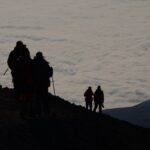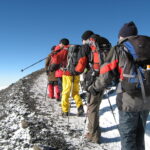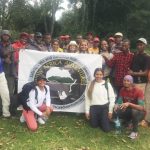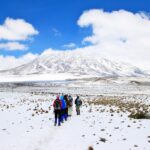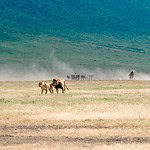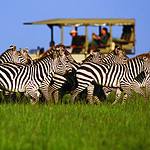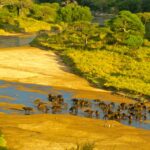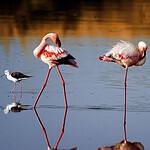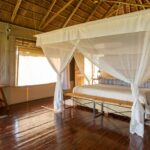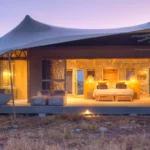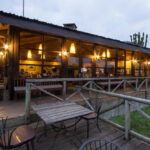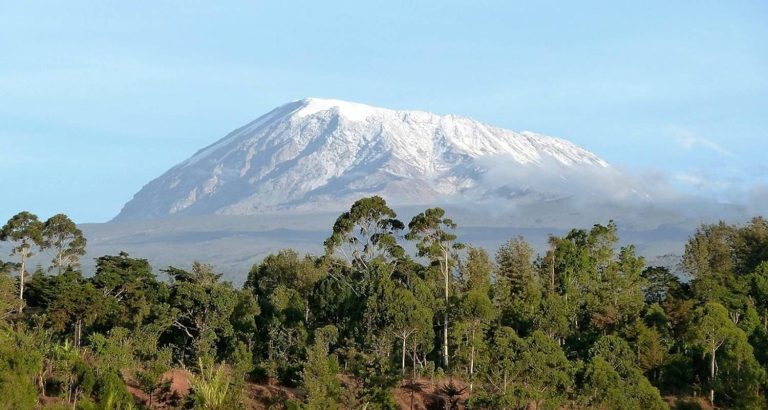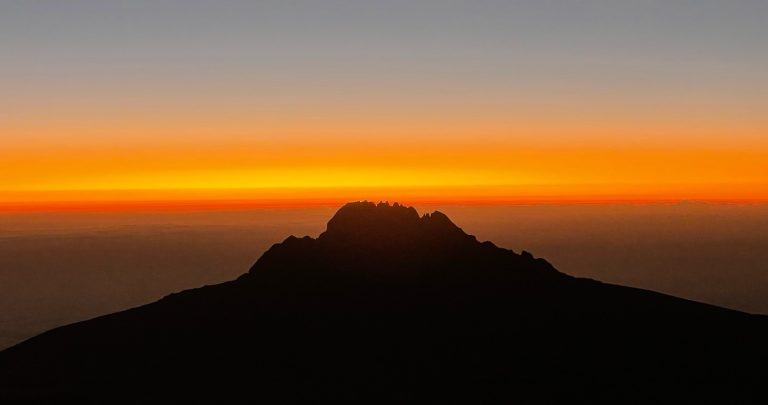Table of Contents
Cycling Safari Tanzania: Two-Wheel Adventures Across Northern Parks
When most travelers think of Tanzania safaris, images of 4×4 jeeps crossing the Serengeti or walking safaris in Ngorongoro come to mind. But in recent years, a new, more adventurous, and eco-conscious trend has emerged: the cycling safari Tanzania experience. Imagine pedaling past giraffes, riding alongside wildebeest, or cycling through Maasai villages with Kilimanjaro towering in the distance. This isn’t just a safari—it’s a transformative way to explore Tanzania’s wild beauty.
A cycling safari Tanzania blends adventure, fitness, sustainability, and cultural immersion. For travelers seeking a deeper connection with the land and its people, few experiences are as thrilling. Let’s explore how you can embark on this unforgettable two-wheel journey across Tanzania’s northern parks.
1. What is a Cycling Safari in Tanzania?
A cycling safari Tanzania is an adventure tour where travelers explore wildlife areas, national parks, and cultural landscapes on bicycles instead of traditional safari vehicles. Guided by professional rangers and cycling experts, participants ride specially designed mountain bikes along established trails and dirt roads.
Unlike traditional safaris, cycling safaris bring you closer to nature—every sound, smell, and breeze becomes part of the experience. From cycling near Lake Manyara’s flamingo-filled shores to pedaling past elephant tracks in Tarangire, this unique form of safari blends wildlife encounters with physical adventure.
2. Why Choose a Cycling Safari Tanzania Experience?
a) Immersive Wildlife Encounters
On a cycling safari Tanzania, you move quietly, allowing you to witness wildlife without disturbing them. You may spot zebras grazing a few meters away or watch giraffes curiously following your path.
b) Sustainable Travel
Unlike jeeps, bicycles leave minimal impact on the environment. By choosing a cycling safari Tanzania, you support eco-tourism and contribute to conservation efforts.
c) Adventure and Fitness
This safari doubles as an outdoor workout. Whether tackling rugged trails or coasting down savannah plains, the thrill of pedaling adds an adventurous twist.
d) Cultural Connection
Cycling routes often pass through Maasai villages and local markets. Stopping along the way allows travelers to engage with locals, taste Tanzanian cuisine, and learn about traditional lifestyles.
3. The Best Northern Parks for a Cycling Safari Tanzania
Tanzania’s northern circuit is world-famous for wildlife. Here’s where a cycling safari Tanzania becomes truly extraordinary:
3.1 Serengeti National Park
Known for the Great Migration, the Serengeti offers cycling trails near buffer zones and community lands bordering the park. Imagine pedaling while thousands of wildebeest thunder past during migration season.
3.2 Ngorongoro Conservation Area
Cycling around the Ngorongoro highlands combines breathtaking landscapes with cultural immersion. Riders pass Maasai settlements and descend into lush valleys with panoramic views of the crater.
3.3 Tarangire National Park
Famous for giant baobab trees and elephant herds, Tarangire offers excellent cycling routes in community areas surrounding the park. Safaris here are peaceful and teeming with wildlife.
3.4 Lake Manyara National Park
The park’s soda lake attracts flocks of flamingos, pelicans, and other birdlife. A cycling safari Tanzania around Manyara offers close encounters with monkeys, hippos, and birdwatching stops.
3.5 Mount Kilimanjaro Foothills
Cycling through coffee plantations and Chagga villages near Kilimanjaro is a highlight. Adventurous cyclists can even combine a biking expedition with a Kilimanjaro trekking package.
4. What to Expect on a Cycling Safari Tanzania
A typical cycling safari Tanzania includes:
- Professional guides: Trained in both wildlife tracking and cycling safety.
- Support vehicle: A backup car for luggage, water, and emergencies.
- Wildlife encounters: Expect to see antelope, giraffe, zebra, elephant, and plenty of bird species.
- Cultural visits: Stops at Maasai bomas (villages) or bustling weekly markets.
- Camping or lodge stays: Nights under the stars or in cozy safari lodges.
5. Cycling Safari Tanzania Itinerary Example (7 Days)
Here’s a sample week-long adventure:
Day 1: Arrival in Arusha – Gear check, bike fitting, and briefing.
Day 2: Arusha to Lake Manyara – Scenic ride through farmland and villages.
Day 3: Explore Lake Manyara – Cycle along the Rift Valley escarpment with wildlife sightings.
Day 4: Lake Manyara to Ngorongoro Highlands – Ride through coffee plantations and Maasai land.
Day 5: Ngorongoro to Serengeti Border – Cycle community trails near the Serengeti.
Day 6: Serengeti Buffer Zones – Wildlife-rich cycling routes.
Day 7: Return to Arusha – Final ride and farewell dinner.
This itinerary balances wildlife, culture, and physical challenge—hallmarks of the best cycling safari Tanzania experiences.
6. Fitness Level and Preparation
A cycling safari Tanzania does not require professional cycling skills, but moderate fitness is recommended. Daily distances range from 30–70 km, with breaks for wildlife viewing.
Training tips:
- Practice cycling on dirt or gravel roads.
- Build stamina with regular cardio workouts.
- Get comfortable with long hours in the saddle.
7. Safety and Wildlife Encounters
Your safety is a priority on a cycling safari Tanzania. Guides are trained in first aid, animal behavior, and emergency protocols. While cycling, you’ll avoid dangerous zones, and a support vehicle ensures quick response if needed.
Encounters with elephants, zebras, and antelopes are common, but predators like lions are usually observed from safe distances.
8. Cultural Experiences Along the Way
A cycling safari Tanzania isn’t just about wildlife—it’s also about people. Meeting the Maasai, learning their traditions, and experiencing their hospitality adds depth to the adventure. Stopping for a local meal of ugali, nyama choma, or banana stew transforms a cycling safari into a cultural journey.
9. Best Time to Go on a Cycling Safari Tanzania
The ideal time is during the dry season (June–October) when roads are passable and wildlife congregates near water sources. The short dry season (January–February) is also excellent.
10. Packing List for a Cycling Safari Tanzania
- Sturdy mountain bike (or rent locally).
- Helmet and gloves.
- Lightweight, breathable clothing.
- Safari hat and sunglasses.
- Water bottles and hydration pack.
- Binoculars for wildlife spotting.
- Sunscreen and insect repellent.
11. Where to Stay: Camps and Lodges
Accommodations on a cycling safari Tanzania range from budget camping to luxury tented lodges. Some eco-lodges even offer cycling tours as part of their safari packages.
Popular options:
- Lake Manyara Tree Lodge (luxury)
- Ngorongoro Farm House (mid-range)
- Public campsites for budget travelers
12. Cost of a Cycling Safari Tanzania
Prices vary depending on duration, group size, and comfort level. On average:
- Budget camping tours: $1,200–$1,800 per person (7 days).
- Mid-range lodges: $2,000–$3,000 per person.
- Luxury tours: $4,000+ per person.
13. Why a Cycling Safari Tanzania is Life-Changing
The beauty of a cycling safari Tanzania lies in its slow pace. Every pedal stroke deepens your connection with Africa’s landscapes. Unlike in a jeep, you become part of the environment—breathing in the dust, hearing the calls of birds, and sensing the rhythm of the wild.
Many travelers describe the journey as meditative and life-changing. It’s an adventure that combines adrenaline, mindfulness, and a sense of freedom found only in nature.
A cycling safari Tanzania is more than just a holiday. It’s a journey of adventure, wildlife discovery, and cultural connection. Whether you’re pedaling past herds of zebra, camping under African skies, or sharing a smile with a Maasai elder, the memories created are unforgettable.
For travelers seeking a truly unique safari, ditch the jeep and grab a bike—your Tanzanian adventure awaits.

